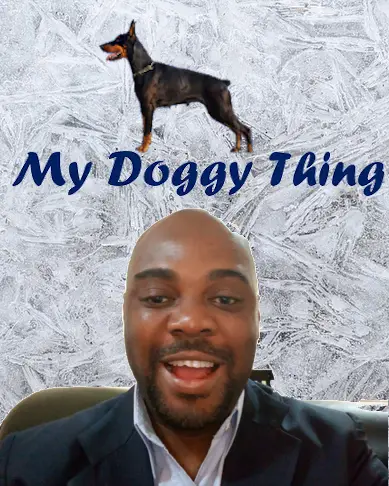Watching a cat interact with its environment is an interesting thing. You can find them at one time perching on the arm of your couch perfectly or chasing some lights about. If you have laser dots, their interest gets piqued ten times more. They will walk across your legs or rub themselves on you as if you are not there, curl up, and lay down anywhere they feel like. They can quickly jump on top of a chair or cupboard as if running after something just to quickly slow down the tempo and walk across the chair or cupboard as if nothing happened.
This is all fine and well watching a cat do it, but if you have a dog that acts in this way, you are certainly going to be worried. The normal perception is that dogs are more stoic and predictable and cats are not. So when a dog’s behavior starts tending towards unpredictability, this becomes a thing of concern. So you ask yourself “Why does my dog act like a cat?” and more important “what can you do about this new behavior?”.
There are various reasons your dog can start acting like a cat
- Your dog is imitating the cats around him.
- Your dog is suffering from separation anxiety.
- Your dog has skin problems.
- Your dog wants a better vantage point.
- Your dog is bored and wants attention.
- Your dog is trying to be social.
- Your dogs breed.
.
.
Let’s look at each reason in more details
1.Your dog is imitating the cats around him.
We all know that our dogs are social creatures, they will try to get along with the people and pets around them in their everyday life. So if you have a situation where they have a cat or cats around them, there is a high probability that they will try to adapt to the cat’s way of life to fit in.
But that is not the only reason why they would imitate the cats around them, your dog sees the way your cat walks over you, the way they get you to pet them, their ability to sit and curl up on you without your permission, and more. These are perks that your dog feels they have to work hard to get and if your cat gets them easily then maybe changing their attributes and acting as the cat does could get them that reward.
The only problem with the above thinking is that your dog is not a cat and would look ridiculous walking around acting like a cat, but you have to give him or her some solid points here, it takes a dog that is highly observant and smart to reason like this.
2.Your dog is suffering from separation anxiety.
Separation anxiety in dogs is a major issue in the dog world. As we already know, our dogs are social animals. They need a lot of company and social interaction to live happily and be content with where they are. Some dogs however need a lot of these interactions more than others. Some others due to their experiences or some events in their lives develop this separation anxiety issue.
They try to attach themselves to their dog parent in the worst possible way, following you around incessantly, causing a nuisance when you are not there and when you are their stick closer to you than your shadows and rub themselves on you as if they are cats.
Luckily for us, separation anxiety can be treated and this cat-like behavior can be dealt resolved with positive reinforcement training techniques and dog management skills.
3.Your dog has skin problems.
Watching a cat grooming itself is a thing of beauty, it is relentless and looks like they are driven by a need to remain clean at all times, but looking at a dog doing so doesn’t inspire the same feeling. A dog licking himself or herself throughout the day relentlessly is a big signal that your dog might be having skin problems.
Skin problems that can make your dog groom themselves relentlessly include but are not limited to the following Dry, Flaky Skin, Yeast Infection, Ringworm, Fleas and Ticks, Allergic Dermatitis, Shedding and Hair Loss (Alopecia), Folliculitis, Acral Lick Granuloma, Skin Tumors, Mange (Mites) and much more.
Basically, dogs that groom themselves incessantly like cats due to skin problems need to visit the vet doctor immediately for treatment. That does not stop you from putting a call across and getting your dog an intermediary treatment.
4.Your dog wants a better vantage point.
Cats seem to always find their way to high places, cupboard tops, window sills, fences, high chairs, tables, and even rooftops. While our cats would want to be in these places as the eternal introverts they are, our dogs tend to be extroverts/social creatures so why would our dogs want to put themselves in these places.
First of all, remember that our dogs are pack creatures. This means they are dedicated to their pack members and are always looking for better ways to protect their pack. Our dogs being observant and smart creatures will figure out from observing cats around them that being able to get into these positions would offer them a better view or vantage point of their surroundings making them better guard dogs.
Though this would be a good thing for you and also for your dog, Being in some of these positions might not be the safest thing for your dog to do, especially when you compare their weights and the height of some of the places in question. You should be watchful and discourage your dog from getting into some of these positions. If you think your dog is safe in some of these places, you can decide to let them be.
5.Your dog is bored and wants attention.
Your dog getting bored shouldn’t be a strange phenomenon to you. Even dogs with very structured lifestyles still get bored. They will probably be ok with their structured lifestyle till they observe how a cat gets the attention they desire, and that to wantonly without having to work for it. Being a cat seems to come with perks so why should your dog keep behaving normally if it will not bring the desired results.
Your dog will willingly test your boundaries and if acting like a cat gets your attention why not.
6.Your dog is trying to be social.
We have mentioned it repeatedly that your dog is a social creature, they want to be a member of a park because this would provide some form of safety and protection for them not to mention companionship. This is a good thing, our dogs should be happy with our company and us being in charge, right?
Right, the missing thing here is that it is not only our company that our dogs want. They want the company of every member of the pack and that includes the cat around them. Acting like a cat around them is their way of trying to socialize with the cat, if they get along with the cat well in this manner, well you might consider letting them be.
7.Your dogs breed.
There are dog breeds that act like cats naturally, you see them spending a good amount of time grooming themselves, sitting in places which is not appropriate for them, rubbing themselves on you, chasing rays of light, and even jumping from one chair or table to another.
Some examples of these dogs are:- the Basenji, Whippet, Vizsla, Mi-Ki, Shiba Inu, Papillon, Shetland sheepdog, Italian greyhound, and more.
You find them exhibiting cat-like behaviors from jumping onto your tables and cheers to sitting in inappropriate places, carrying themselves around with an air of confidence, grooming themselves excessively, and more
We have addressed the possible reasons why your dog acts like a cat. As you can see it’s not all bad, if your dog’s behavior is because of skin problems, medication and treatment from your vet will handle the problem. If it due to separation anxiety, positive reinforcement techniques, and dog obedience programs will handle the problem.
But if you have a situation where you still say to yourself “my dog thinks he’s a cat” then you can approach the problem using the suggestions listed below.
HOW TO MAKE YOUR DOG TO STOP ACTING LIKE A CAT.
i. Keep your composure.
Whenever you find your dog perched in that dangerous place or position. Do not freak out. You panicking can lead to your dog panicking which can cause them to lose their footing fall. This might lead to an injury and you don’t want that.
Be calm around them and try instructing them to get down. For smaller dogs, you can easily assist them off these places. Your dog doesn’t understand that this behavior is not acceptable so be patient in dealing with him or her at this stage.
ii. Begin an agility program for your dog.
Whether you do this at home or do it with a professional dog trainer. The aim is to get your dog the physical and mental exercise they need. A dog that is mentally stimulated properly would not need to resort to gimmicks to get your attention.
Your dog by this will get all the attention they need and would be more relaxed around you and any other person at home. This of course is as far as you are in control of the situation.
iii. Use positive reinforcement to redirect their behavior.
This is about providing an alternative option for your dog and rewarding them when they choose to act on the new option. For example, your dog may rub himself against you in other to get your attention, ignoring him sends a message that these tactics do not work. If you prefer they just sit beside you and keep quiet, immediately they take that position, give them a small back rub or some treats.
This will tell them that what they just did is the acceptable thing. If you don’t even want them rubbing themselves on you. Get up and leave the place completely. You can provide other options like dog chew toys to keep them engaged.
Basically, your dog will understand that rubbing themself on you or other cat-like behavior around you doesn’t pay off.
iv. Avoid shouting at your dog.
Time and again, it has been proven that raising your voice on your dog does not bring about any positive outcome. It only ends up making your dog confused and defensive. In situations where they are in high positions, raising your voice might cause them to lose posture and get injured.
It is always better to call out to your dog calmly and confidently, draw their attention to yourself or something else. In training, there should be commands that are used to congratulate or show displeasure like “good dog” and “bad dog”.
You need to engage your dog in such a manner, as you can see obedience training is key to managing this situation and not shouting or raising your voice on your dog.
IN CONCLUSION
We have dealt with every possible reason that will make your dog act like a cat and tips on how to manage them. Whether it be medical or behavioral, most of the things we discussed are not direct threats to our dogs. It all comes down to the age-old problem of the relationship between man and dog. Whatever decision you take, the main thing is to have your dog assured that he or she has a place in the pack and in your life.

Hi, I am Charles Nwankwo Editor-in-Chief, Mydoggything.com. Gleaning from Professional Dog Trainers, behaviorist, Registered Veterinarians, and Breeders. We are passionate about making dog care easy for you. My job is to make sure that you get the best-updated dog care information to understand and take care of your dog or dogs.
